The humble cucumber is always a winner. Whether it’s for a quick snack or added to your favorite burger, a crunchy, delicious pickle is an essential item in every kitchen. But pickles don’t always turn out the way you want them to, and sometimes, they lack that crispness that makes them so enjoyable.
If you want the perfect pickle every time, we’ve got all the tips you need. Keep reading to ensure that every bite comes with a satisfying crunch.
Different Styles Of Pickled Cucumber
There are two different recipes used to pickle cucumbers: lacto-fermentation and brining. Brining is the addition of vinegar, which is the more traditional method.
Let’s explore these methods a little bit further:
Lacto-fermentation: does not use any vinegar, only salt and water. The cucumbers become tangy through a natural fermentation process by promoting healthy bacteria.
Traditional recipe: uses vinegar and spices to pickle cucumbers. These are known as vinegar cucumbers or marinades.
Why Do Pickles Become Soft?
There are various reasons that pickles lose their crunch.
The cucumbers used initially may not have been fresh, the pickles may have over-fermented, or the ratio of salt to water may have been wrong. Cucumbers also possess a natural enzyme that slowly causes their flesh to break down, and this natural process causes the cucumber to soften over time.
So, how do you make crunchy pickles? Let’s explore some tips for both lacto-fermentation and traditional vinegar pickles.
How To Get The Crunchiest Pickles
Tip 1: Use Fresh Cucumbers
It may seem obvious now that your cucumbers should always be fresh to give your pickles the best chance of staying crunchy. Once cucumbers have been harvested or picked, the process of softening immediately begins. The sooner you get them into that pickling jar, the more likely they are to stay crisp and crunchy!
Tip 2: Choose The Correct Varietal Of Cucumber
As the name suggests, pickling cucumbers are the perfect varieties for pickling. Also known as Kirby cucumbers, they are ideal due to their thicker skin and fewer seeds. If you can’t get your hands on pickling cucumbers, the Lebanese cucumber is a good substitute. Other varieties, like the English cucumber, become soft and soggy during the pickling process, so they’re best avoided.
Tip 3: Cut Off The Blossom Ends
The flowering and stem ends are the blossom ends, and they contain the pesky enzyme that begins the process of breaking down the cucumber, ultimately softening it. Cutting off the ends of the cucumbers before placing them in the jar will help you to avoid this.
Tip 4: Give Your Cucumbers A Rehydrating Ice Bath
No, this is not for your muscle recovery but for your cucumbers! After being transported to market, cucumbers start to dehydrate. You can rehydrate cucumbers by submerging them in an ice bath for around 3-5 hours or overnight. For the best results, place the ice bath in the refrigerator to maintain the cold conditions.
Tip 5: Use Calcium Chloride
You might be thinking you’re in for a physics class, but calcium chloride is a type of salt that helps in the pickling process, keeping your pickles from going soft. It differs from your typical sea salt (sodium chloride) and doesn’t replace the need for salt. You need to use calcium chloride in conjunction with the sea salt to help maintain the texture of the pickle. Just be sure to get your measurements correct, or you’ll end up with awfully salty, unpalatable pickles.
Tip 6: Get The Salt Ratio Right
On the subject of salt, finding the right ratio and balance of salt is really important. Too little salt and the cucumbers will soften too much. Adding too much salt will make the cucumbers overly crispy and possibly too salty in flavor.
Using certain types of salt can also affect the clarity of your brine. While this doesn’t impact flavor, a cloudy brine is not as appealing as a clear brine that allows you to see your creation. Pickling salt or Kosher salt (without caking agents) are the best choices for brining.
Tip 7: Add Tannins
Naturally occurring, tannins are a great fighter against the enzymes that soften cucumbers. They will work to keep your cucumbers crunchier than your neighbors.
Take your cue from bottles of the best quality small-batch pickles, as they often include grape leaves, oak leaves, raspberry leaves, and black tea to preserve the crunch and give a little extra flavor. Chili is also a great source of tannins, so if you like the heat, add them!
Additional Tips Specific to Lacto-fermentation
Tip 8: Avoid Adding Bacteria (Backslopping)
Certain lacto-fermentation recipes will call for the addition of bacteria to kick-start the fermentation process. An example of this is adding sauerkraut juice. However, this isn’t recommended for pickles as the bacteria at the beginning and end of the cycle are different. This technique of ‘backslopping’ can cause the pickles to become soft very quickly, so it’s best avoided.
Tip 9: Time The Fermentation Correctly
The process of fermentation will give the pickles their unique tangy flavor, but fermenting for too long can cause the pickles to become soft as the bacteria begin to break down the vegetable. The recommended time for this process is 5-8 days at room temperature. Thereafter, the jar should be placed in the fridge.
Tip 10: Maintain Temperature Control
Temperature is everything, whether you’re cooking a steak or fermenting a jar of pickles. During fermentation, controlling the temperature of the room can be tricky as the pickles must be in a cool place with very little temperature fluctuation. Ideally, the best temperature for fermentation is 62.6°F, but a bit of variation is not a huge issue. Just ensure that the pickles aren’t stored in direct sunlight. If you have a cool and dark basement, this is a great spot for fermentation to take place.
Tip 11: Select The Right Jar
Choosing a jar involves a little bit of planning to create the perfect pickling environment. Make sure that your jar has a tight-fitting lid and that the opening allows you to place the pickles inside with ease. The recipe that you choose to follow should match your jar size to ensure that you get the ratios correct.
Crunch Time
Creating a crunchy pickle involves a combination of key tricks and processes. Just remember that pickles are sensitive to light, love being stored at the right temperature, and should be eaten often!

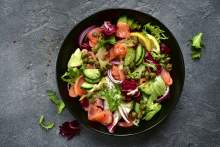
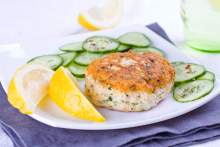
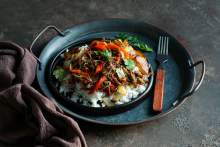
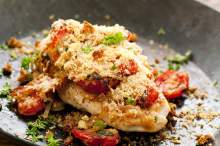
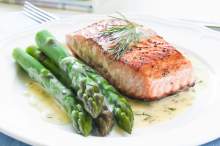
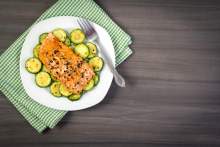
Leave a review or comment